Lajoie Farm
The site is accessible as part of activities co-produced with the Musée de Charlevoix. Summer 2023: Jully 15 À la soupe! Jully 29 Le grand ménage! September 2 De fil et d'aiguille
The site is accessible as part of activities co-produced with the Musée de Charlevoix. Summer 2023: Jully 15 À la soupe! Jully 29 Le grand ménage! September 2 De fil et d'aiguille
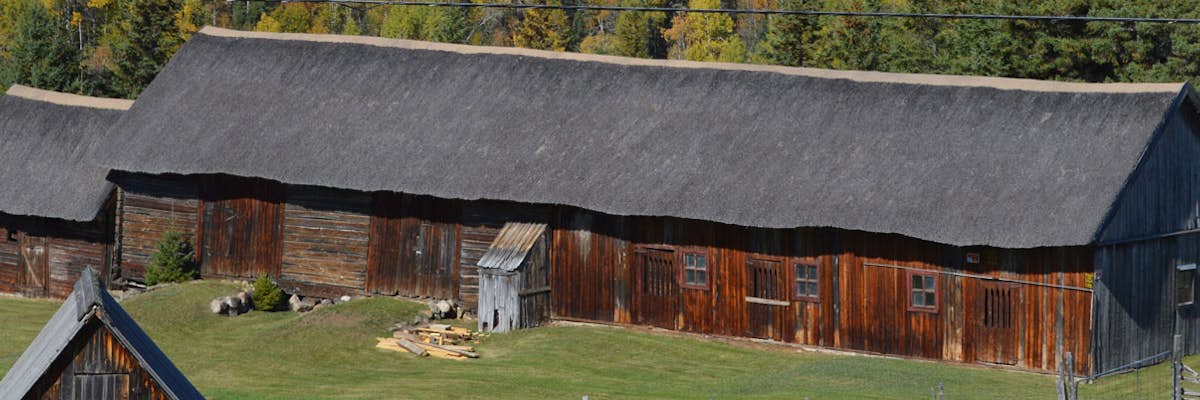
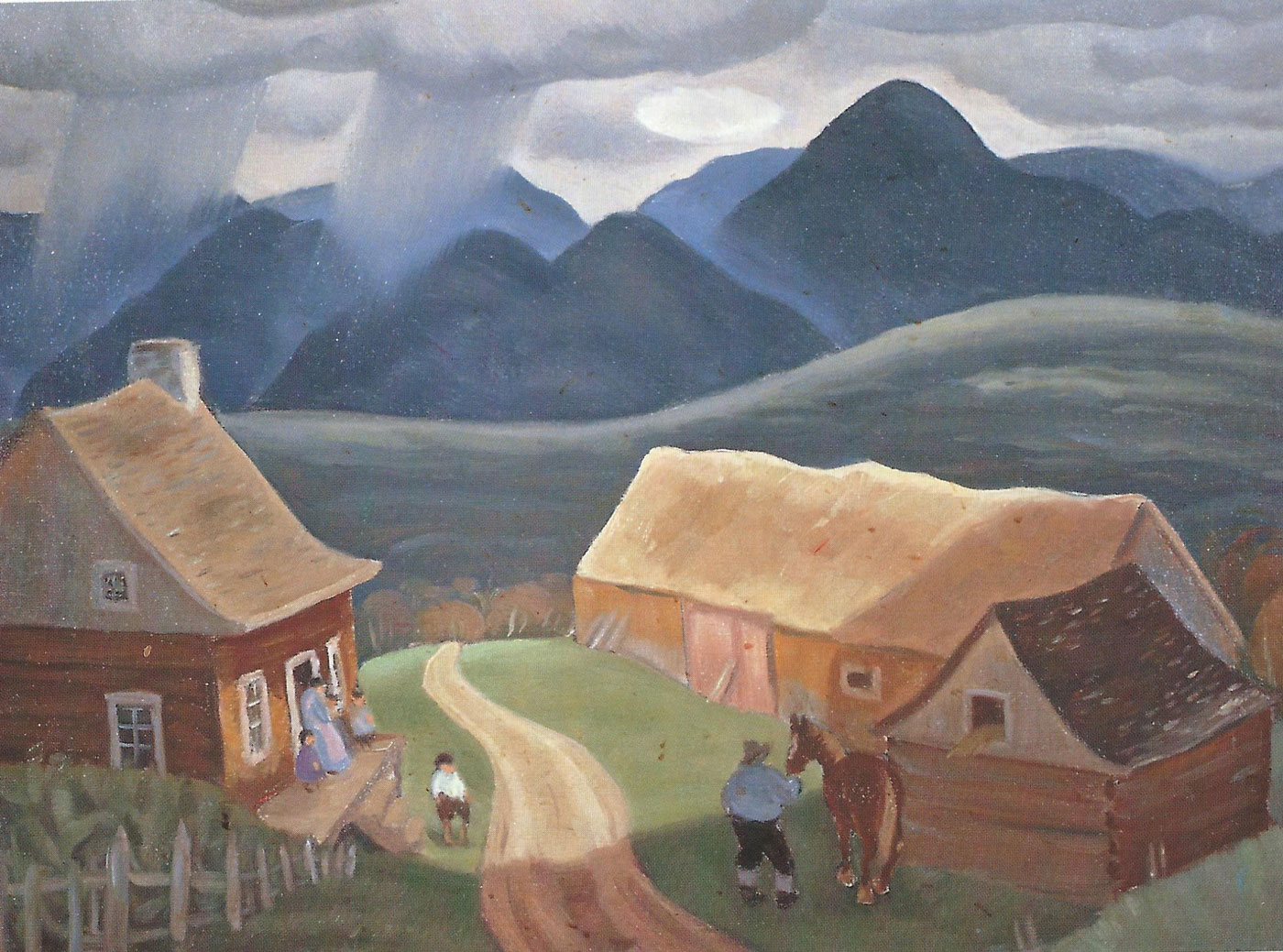 The house and buildings are a quintessential example of the backcountry farms that inspired, among others, artist and ethnologist Jean Palardy, a frequent visitor to Charlevoix in the 1930s. Private collection.
The house and buildings are a quintessential example of the backcountry farms that inspired, among others, artist and ethnologist Jean Palardy, a frequent visitor to Charlevoix in the 1930s. Private collection.
The first owner of the Lajoie farm was probably Joseph Laforêt (prior to 1835). However, it wasn’t until the official land register was compiled in 1881 that we can be certain of an owner’s name: Joseph Gilbert.
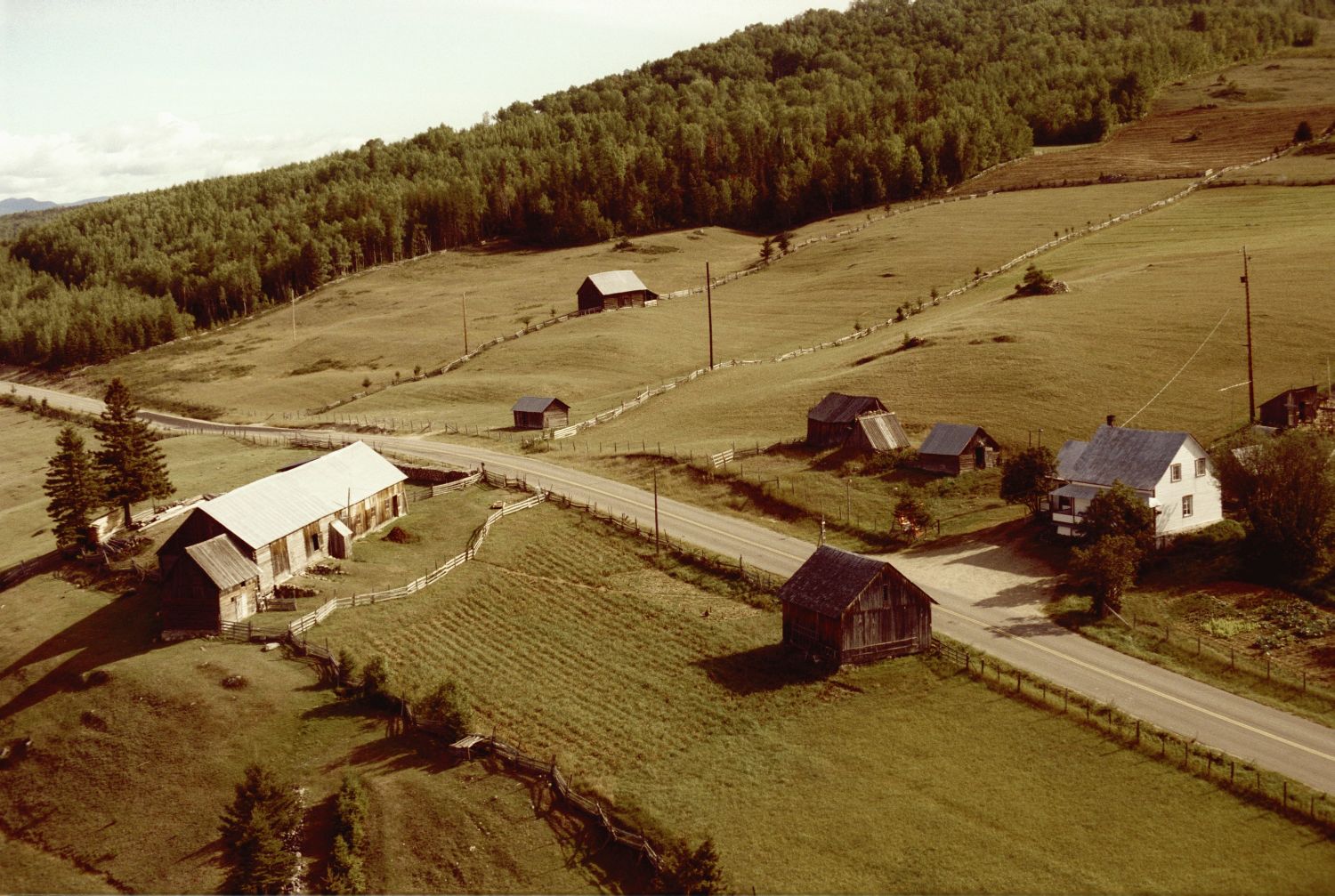
By combing through the many past transactions, we can conclude that the original farm was centered around the largest barn. A smaller barn, located on the other side of the public road, may be all that’s left of this group of buildings, which may date back to the mid-19th century.
The two old barns on the Lajoie farm were recognized as heritage buildings by the Ministry of Culture in 1975.
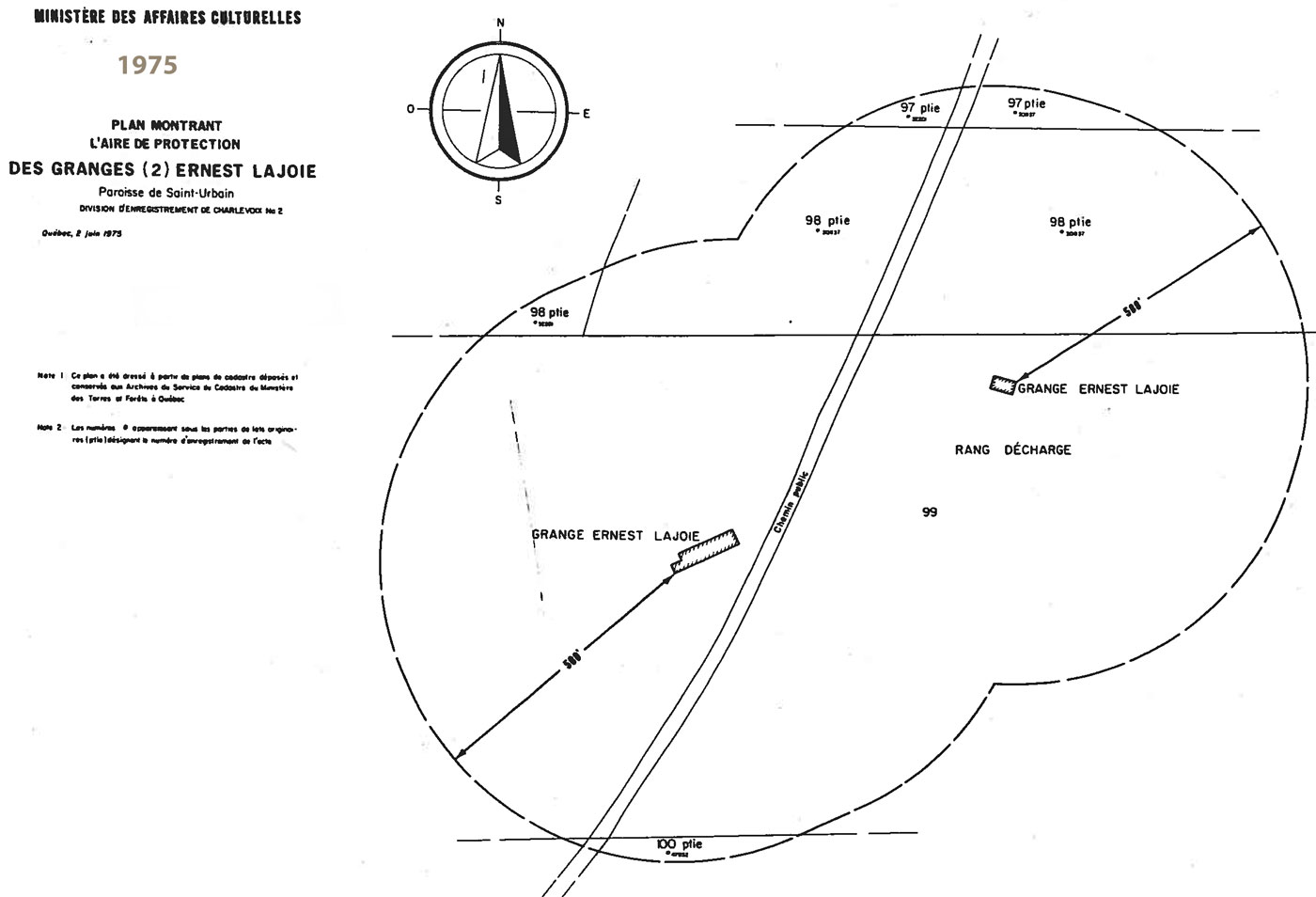
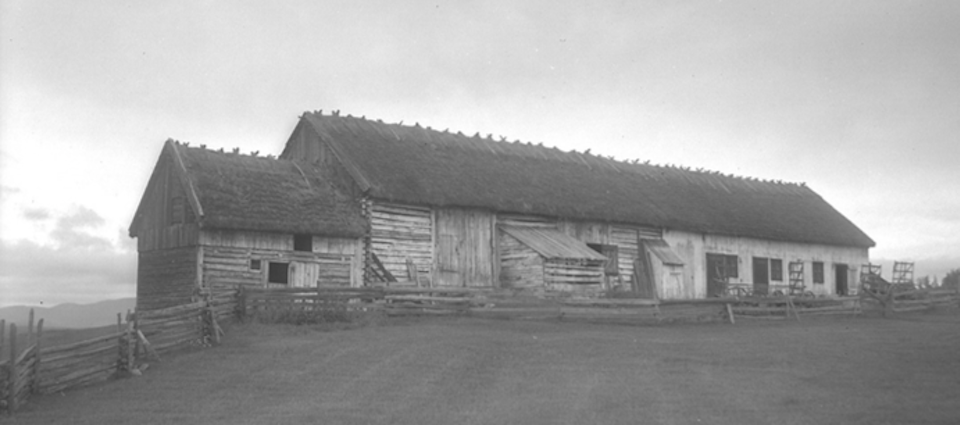
If the first owners did live on site, the small barn could date back to the mid-19th century. Joseph Gilbert may well have used it in the 1860s when he moved there with his new bride, Angélique Tremblay.
The barn kept its original thatched roof until the 1970s. When the remaining thatch was removed, a new sheet metal roof was installed over the original structure, which made it easy to restore.
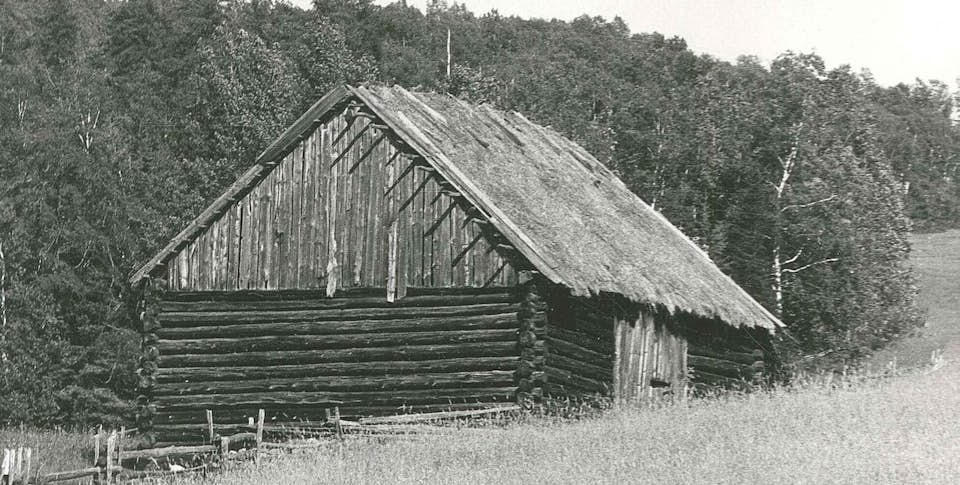
The big barn was likely built by Clovis Gilbert in 1885 when he moved to the part of the lot (specified as having no buildings) that his father Joseph gave him.
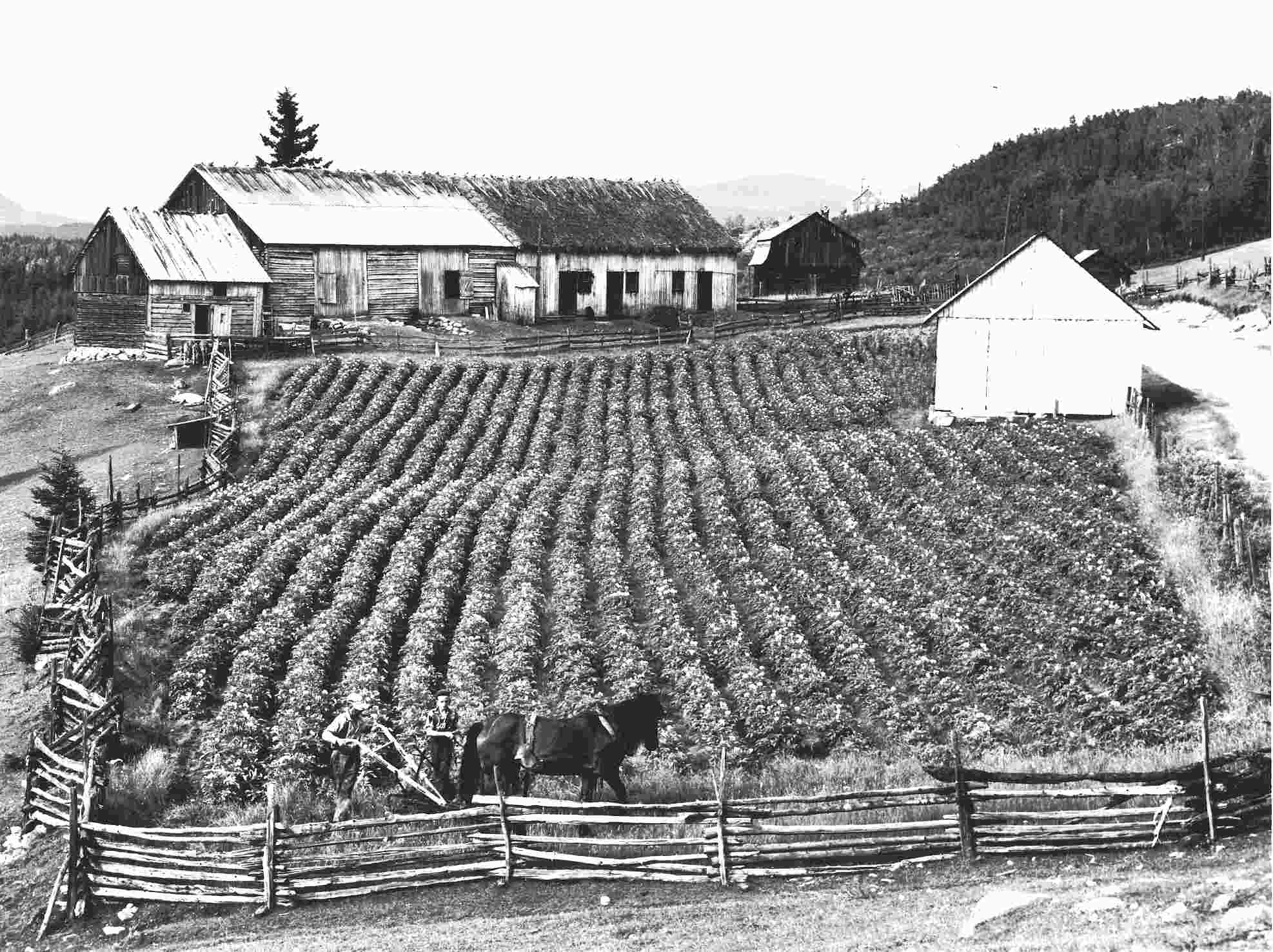
The house with the mansard roof visable at the right of the photo could have been his father's house (no longer standing).

Very few of the thatched roofs that were once commonplace in Charlevoix and throughout Quebec remain today. The Lajoie barn’s thatched roof is undoubtedly the most spectacular surviving example.
The barn got a new thatched roof in 2000 when Héritage Charlevoix decided to restore the barn to its original appearance. We hired Le Goff, a French company, to do the job.
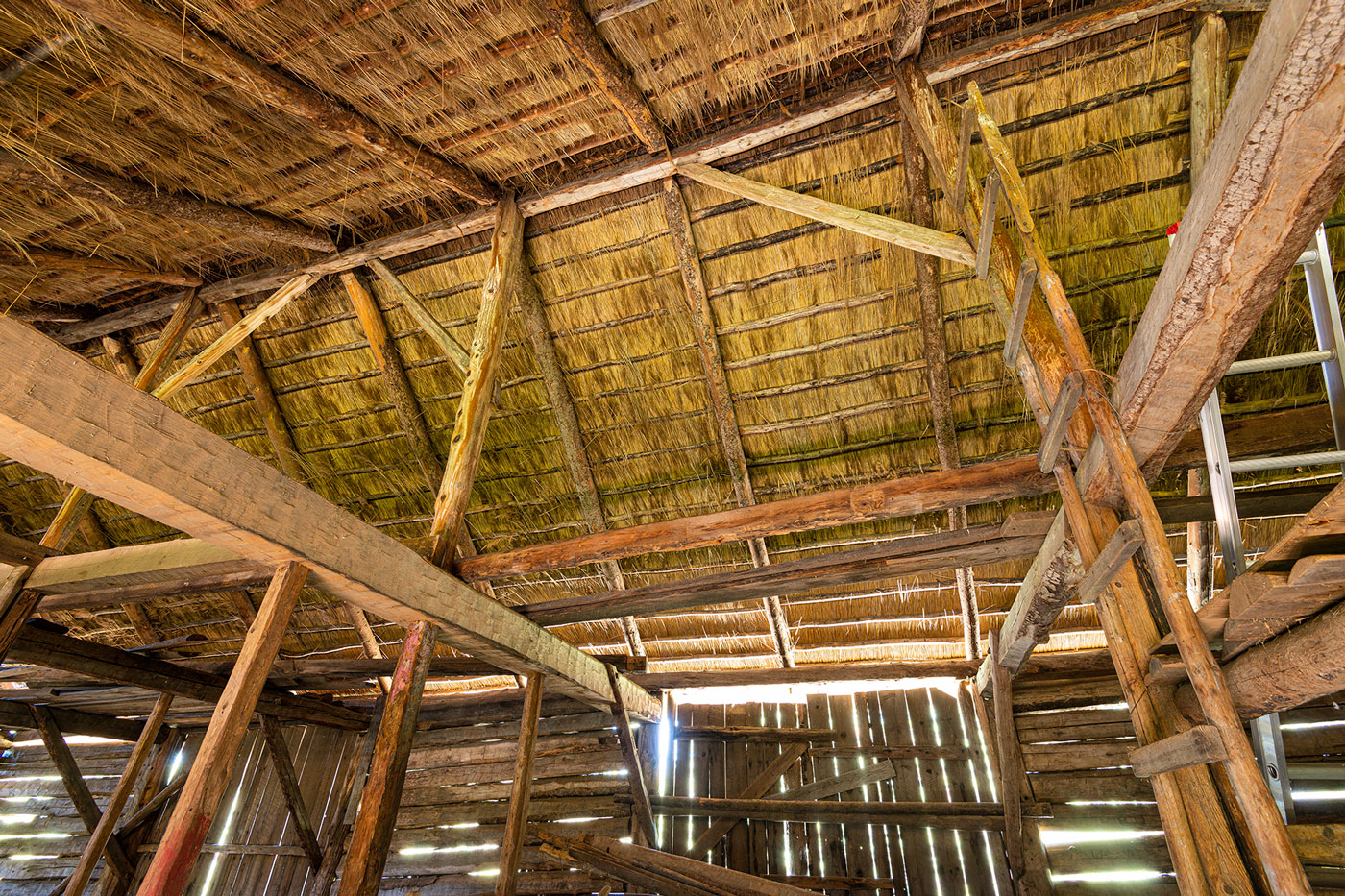
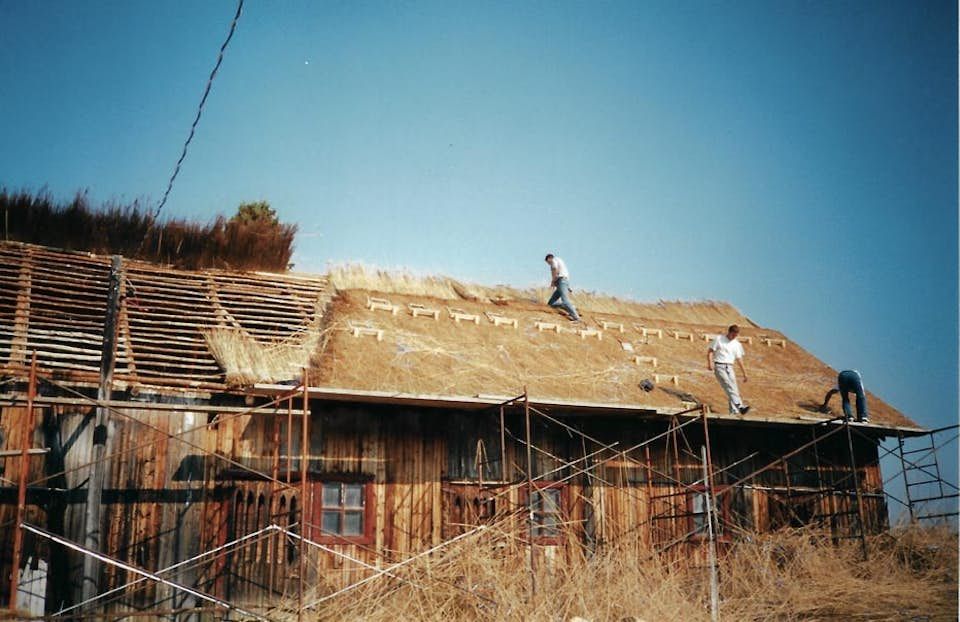
While the general technique for installing thatched roofs was the same across Quebec, there was a slight difference in how roof ridges were capped in Charlevoix. When thatching a roof, thatchers started at the eaves and covered both sides of the roof by laying down successive rows of bundles of reeds. Once they reached the ridge, they would leave a gap. In Charlevoix, the gap was filled with straw held in place with wooden stays spaced regularly along the entire ridge line. This technique was the same as the one used in Northern European countries. To keep water out, everything had to be watched closely and regularly maintained. Unfortunately, such close monitoring was not possible with the Lajoie barn, and this method would have quickly endangered the entire structure.
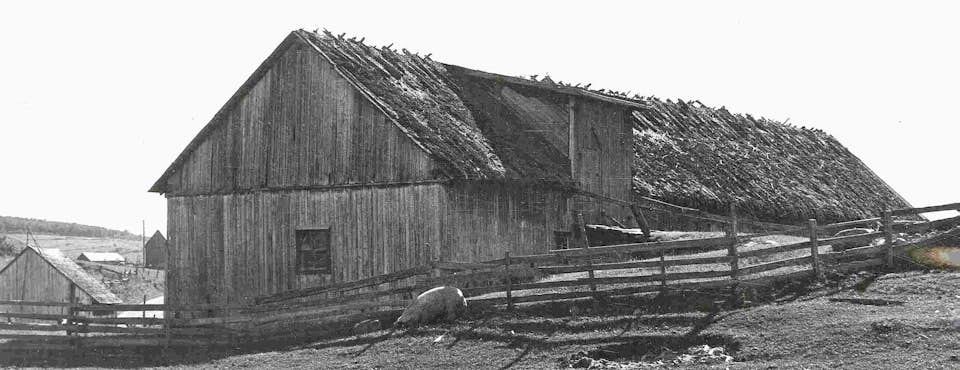
Elsewhere in Quebec, as was the case in France, the ridge would have been waterproofed by covering it with sod or clay, as seen in this example, photographed in Yamachiche in 1961 for the Inventaire des Œuvres d’Art de la Province de Québec.
For durability reasons, Le Goff was allowed to use this technique for the Lajoie barn restoration. Rushes were also used instead of traditional rye straw, which is difficult to find and not very durable.
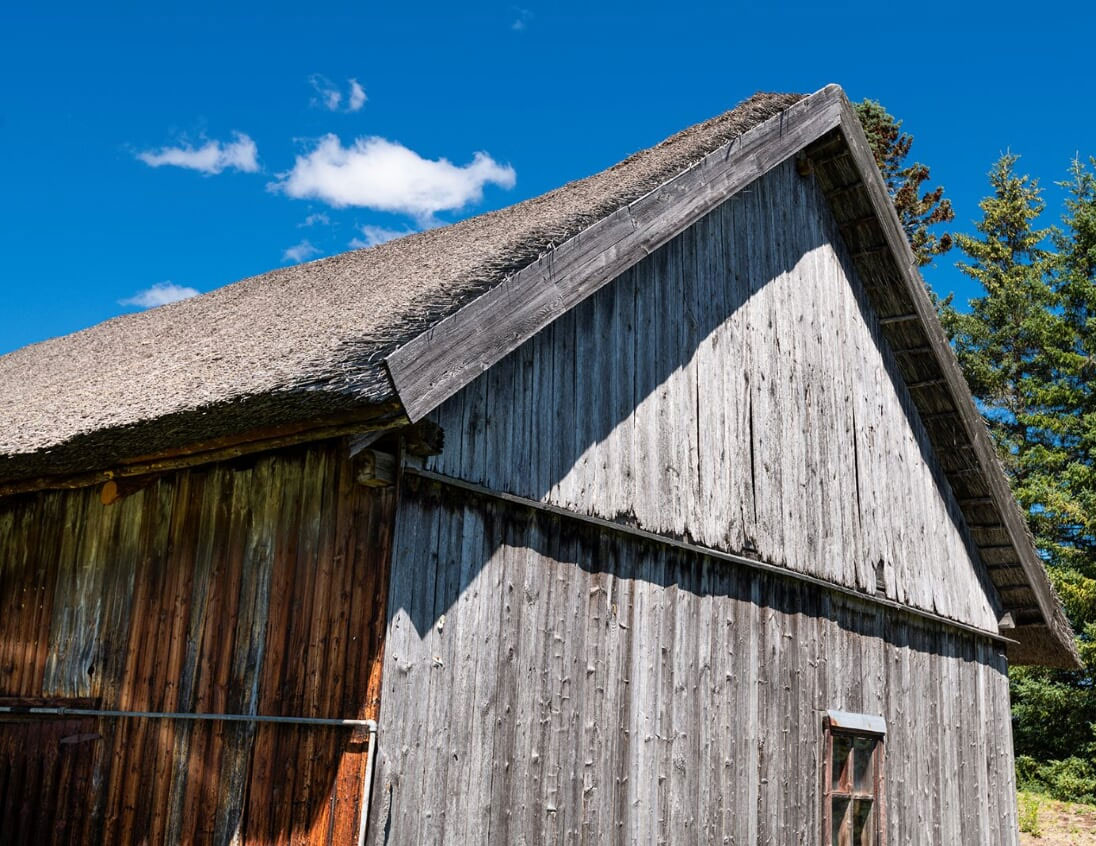
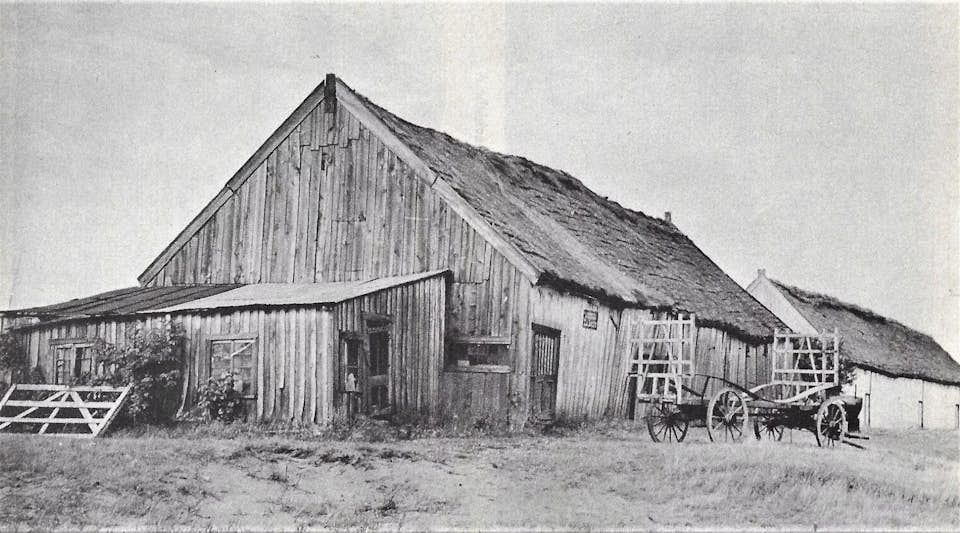
The Gauthier sheep pen was originally located a few kilometres from the village of Saint-Urbain. It was moved to the Lajoie farmstead in 2004 to save it from being torn down. The damaged north wall needed to be protected with a temporary covering while awaiting restoration.
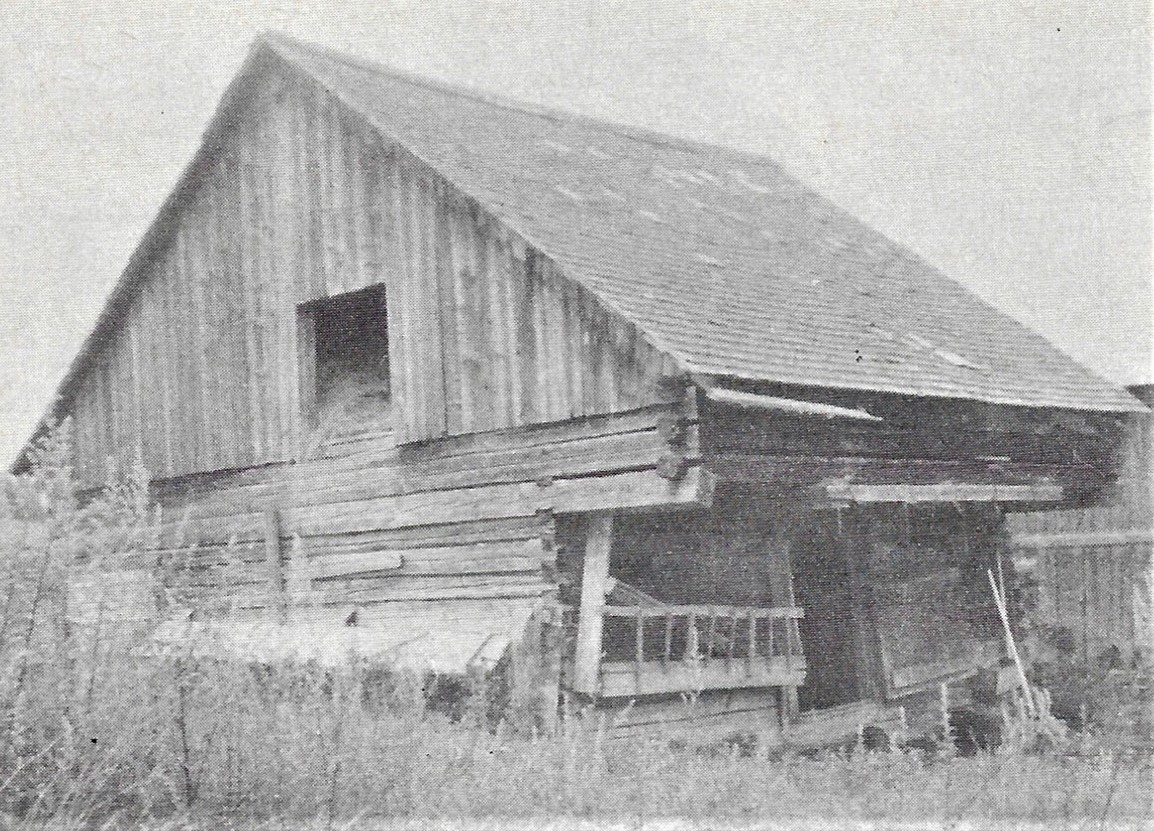
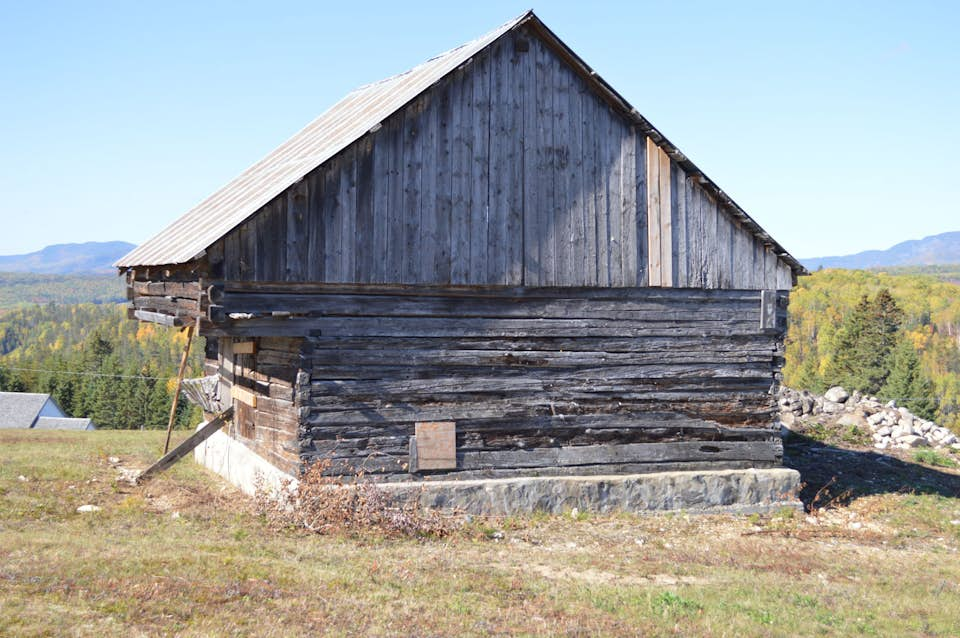
This architectural feature of the Gauthier sheep pen can also be seen on a few other surviving barns in the area.
A forebay or overshoot is an overhanging portion of the upper part of the barn wall, offering protection to animals and providing a location for a feeding or watering trough. In 1917, ethnologist Marius Barbeau remarked that Charlevoix was the only place where you could still see examples of forebays.
The forebay and split-rail (zigzag) cedar pole fence are traditional features typical of the Charlevoix countryside.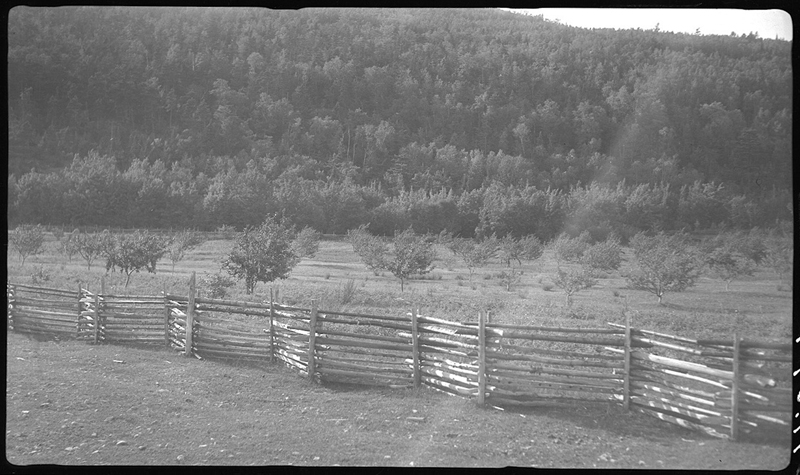
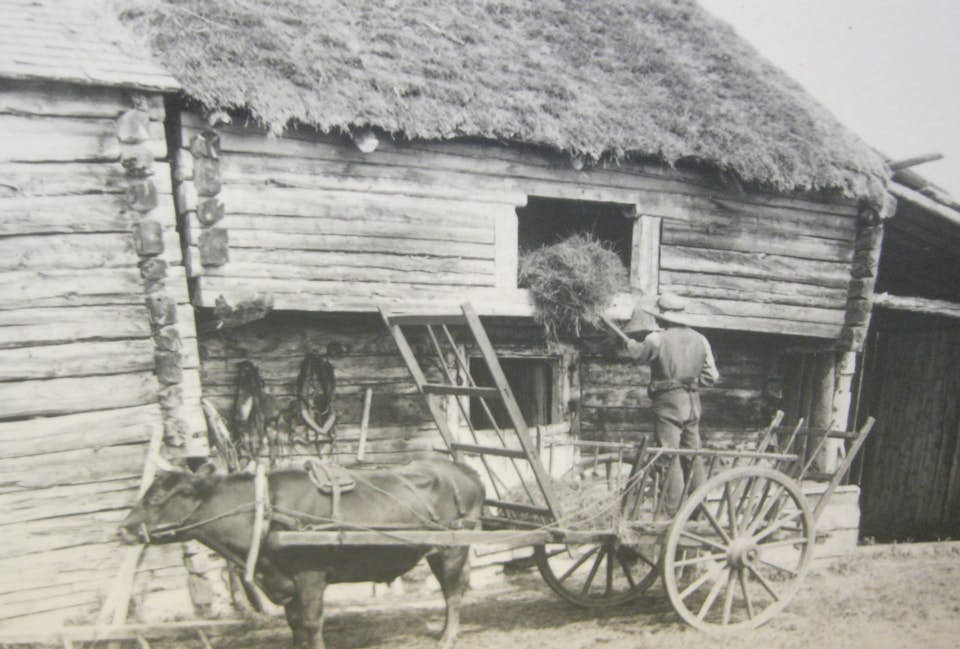
Little remains of the original house. To make it more comfortable and to keep up with the times, successive generations have made major changes to the interior. It is, nevertheless, representative of small farmhouses in Charlevoix for its shape and size.
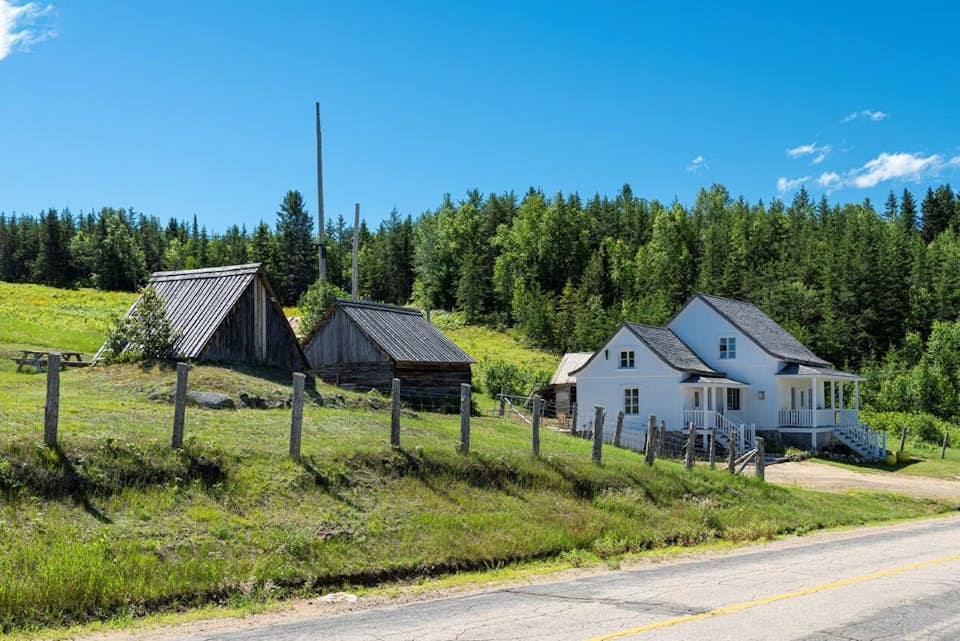
Several outbuildings round out this typical backcountry farm, including a solid square-log pigsty big enough for a small herd that would have met family needs.
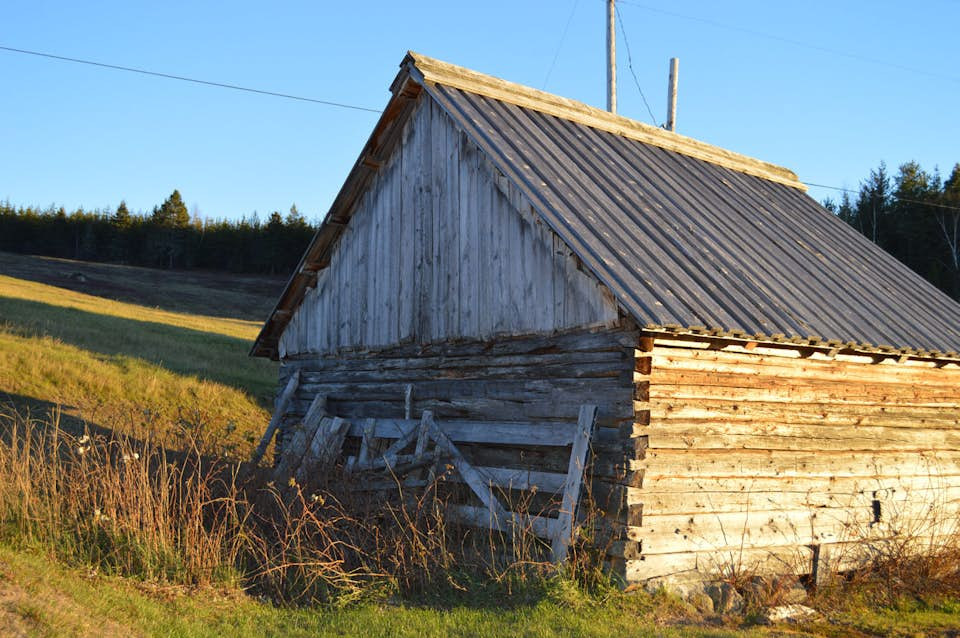
There are two types of root cellars, depending on where they are located: a small chamber with a door carved into a hillside or, as is the case at the Lajoie farm, a mound topped with a little roof under wich a hatch provides access to the cellar.
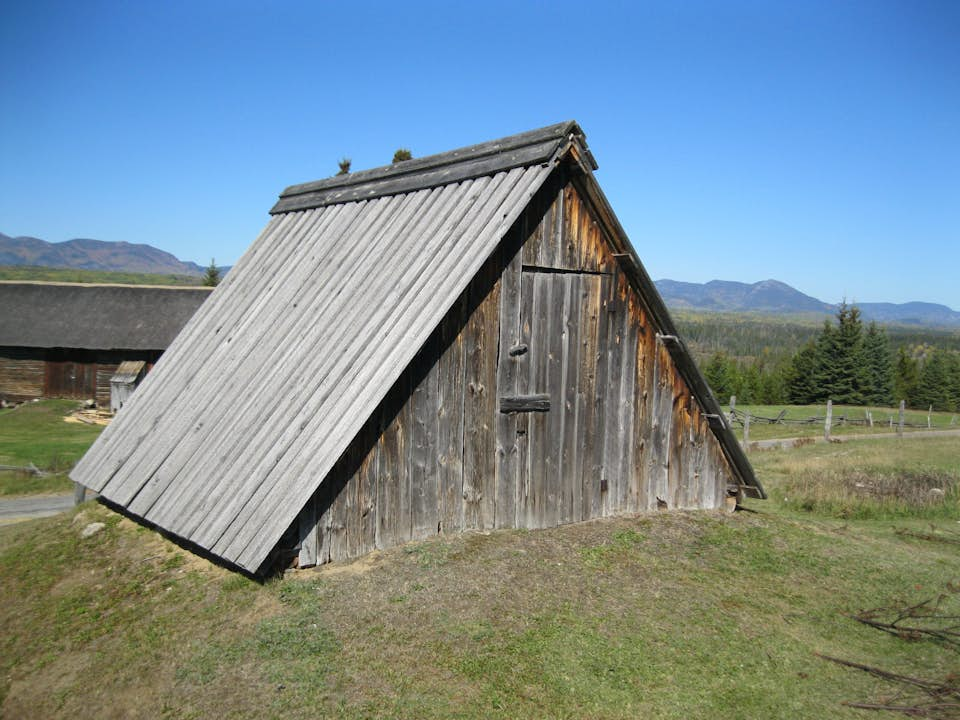
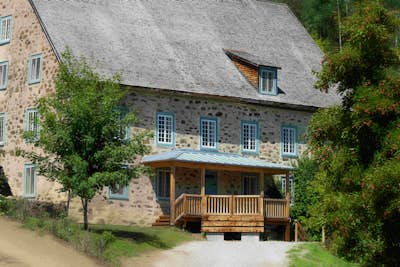
Built in 1825, the Rémy Mill is renowned for its production of premium organic flour.
For the 2025 season, it is open to visitors from 10 AM to 5 PM daily, from June 21 to September 1st.
Guided tours are offered, and flour is available for purchase on-site.
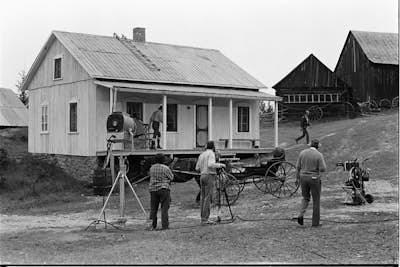
A traditional farm setting that captured the hearts and imaginations of viewers of the TV series Le temps d’une paix.
The site is accessible as part of activities co-produced with the Musée de Charlevoix.
The site is open to the public during scheduled activities throughout the summer season. However, visitors are welcome at any time to admire the buildings and read the interpretive panels from outside the site.
To purchase tickets, visit our ticketing page:
https://linktr.ee/billetterie_roseanna
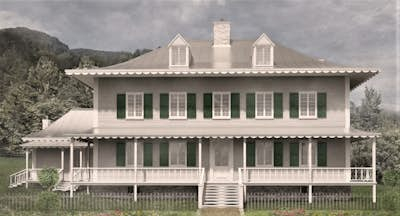
The bourgeois dream of an aspiring country gentleman